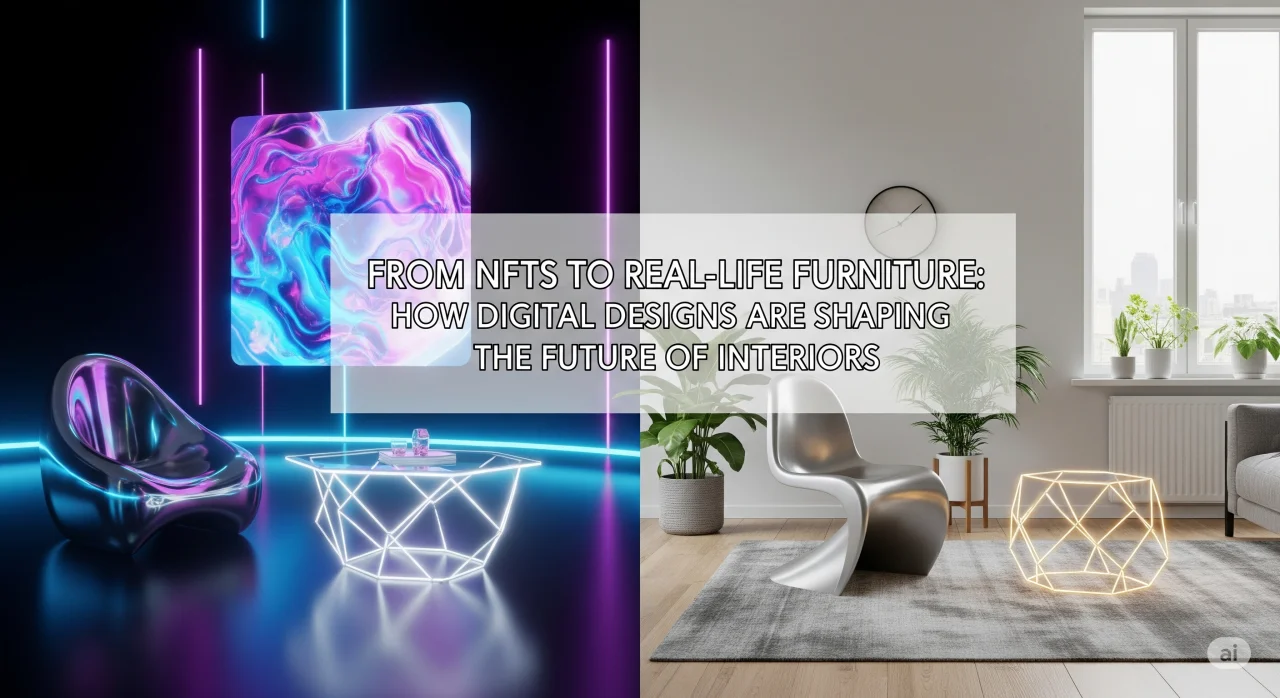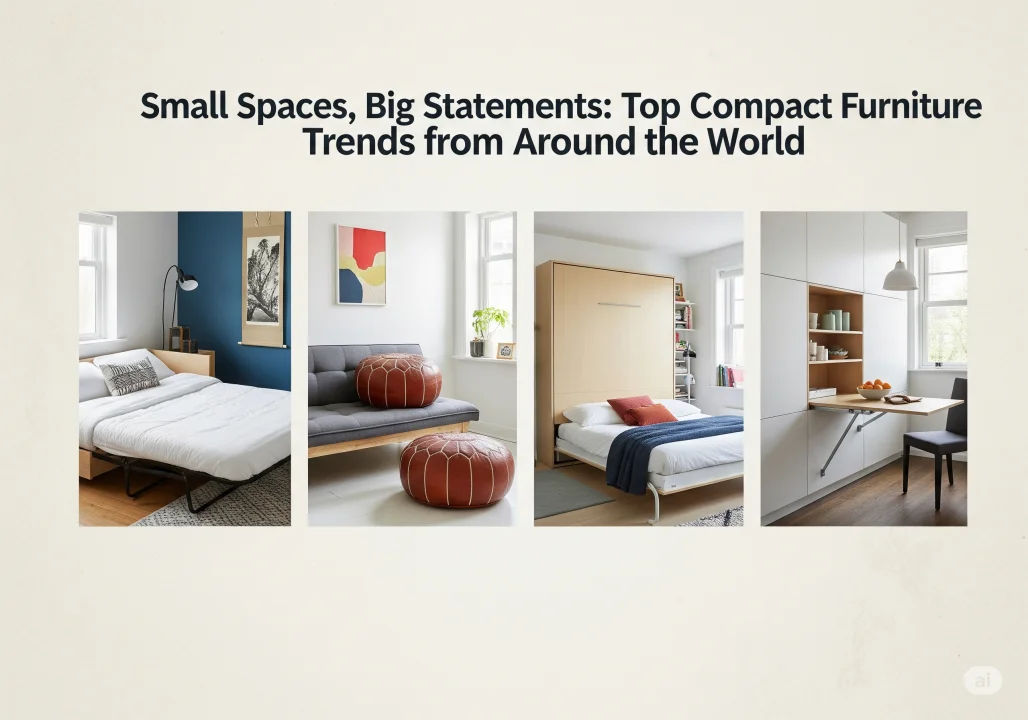In recent years, NFTs (Non-Fungible Tokens) have transformed the way we perceive ownership in the digital world, revolutionizing art, collectibles, and even fashion. Now, this blockchain-powered concept is stepping into an unexpected territory — furniture design. Visionary creators are beginning to bridge the gap between virtual assets and tangible interiors, turning digital artwork into functional, limited-edition furniture pieces. This fusion of technology and craftsmanship not only redefines design trends but also opens a new chapter for the future of bespoke interiors.
From Digital Tokens to Tangible Designs
The shift from NFT artworks to physical furniture is more than just a creative experiment — it’s a bold reimagining of how design is conceived, owned, and experienced. Instead of remaining as purely digital files, NFT designs are now serving as blueprints for real-world furniture production. Using advanced tools like 3D printing, CNC machining, and AI-assisted modeling, designers can translate a virtual concept into a functional piece without compromising its uniqueness.
Each item carries its NFT as a proof of authenticity, ensuring that the owner holds both the digital certificate and the physical creation. This dual ownership model is attracting art collectors, tech enthusiasts, and high-end interior clients who value exclusivity. By merging blockchain’s transparency with traditional craftsmanship, NFT-based furniture could redefine how we buy, sell, and value interior pieces in the years ahead.
Technology & Manufacturing
Turning an NFT into a real piece of furniture requires a seamless blend of digital innovation and artisanal skill. Designers begin by creating or acquiring a digital asset — an NFT — that serves as the official design blueprint. This file is then adapted for physical production using advanced modeling software, often incorporating AI-driven design tools that optimize structure, ergonomics, and aesthetics.
Manufacturing methods such as 3D printing, CNC cutting, and laser engraving allow for precision and complexity that traditional techniques might struggle to achieve. Materials range from sustainably sourced woods to high-performance composites, reflecting the growing emphasis on eco-conscious production. The blockchain aspect ensures that every stage, from design creation to final assembly, is traceable and verifiable, protecting intellectual property and maintaining product authenticity.
This combination of cutting-edge technology and traditional craftsmanship doesn’t just create furniture — it creates functional art with a digital identity.
Market Potential
The fusion of NFTs and physical furniture is opening exciting new opportunities in the luxury and design markets. Early adopters include digital art collectors, technology enthusiasts, and affluent consumers looking for exclusive, one-of-a-kind pieces that blend innovation with style. Galleries and boutique design studios are beginning to showcase NFT-inspired furniture collections, creating buzz around limited-edition releases that come with both a digital certificate and a tangible artifact.
This emerging market taps into the growing demand for personalization and authenticity, where buyers value not only aesthetics but also provenance and story. Furthermore, made-to-order production enabled by digital designs reduces overstock and waste, aligning with sustainable consumption trends. While still niche, NFT furniture is poised to grow as blockchain technology becomes more integrated into mainstream luxury goods, offering a new way to invest in and experience design.
Sustainability Angle
One of the most promising benefits of NFT-based furniture design lies in its potential to promote sustainability. By digitizing design assets and producing pieces on-demand, manufacturers can significantly reduce waste associated with mass production and unsold inventory. This made-to-order model minimizes the carbon footprint typically generated by large-scale manufacturing and shipping.
Additionally, many designers integrating NFTs into their workflow emphasize the use of eco-friendly and recycled materials, aligning the cutting-edge technology with responsible production practices. The transparency offered by blockchain also helps consumers verify the ethical sourcing and manufacturing of their furniture, fostering trust and accountability.
As environmental concerns become a priority for consumers worldwide, NFT furniture presents a unique opportunity to combine innovation, exclusivity, and sustainability in one compelling package.
Spotlight on Designers
The NFT-to-furniture movement is gaining momentum thanks to visionary designers around the world who are pushing creative and technological boundaries. Internationally, artists like Krista Kim have explored digital landscapes that inspire physical environments, while startups such as Cryptotile experiment with NFT-backed modular furniture collections.
Closer to home, emerging Turkish designers and studios are beginning to explore this hybrid realm, combining rich design heritage with blockchain technology to create unique pieces that appeal to modern tastes. These creators often collaborate with tech firms and 3D printing experts to bring digital concepts to life, fostering a vibrant local ecosystem for innovation.
By spotlighting these pioneers, FurniPress can inspire its readers and encourage the furniture industry to embrace new models of design, production, and ownership.
Future Outlook
As blockchain technology and digital art continue to evolve, the integration of NFTs with physical furniture design is poised to reshape the luxury and bespoke interiors market. We can expect to see increased collaboration between designers, technologists, and manufacturers, as well as new business models centered on digital ownership, customization, and traceability.
This trend could also drive innovation in smart furniture—pieces embedded with sensors and connectivity, linked to their NFT certificates for added functionality and user interaction. While still in its infancy, NFT furniture represents a fascinating convergence of art, technology, and craftsmanship that could redefine how we create, buy, and experience interior spaces.
The journey from digital token to tangible design is just beginning, offering exciting possibilities for designers and consumers alike. By embracing NFTs, the furniture industry can unlock new levels of creativity, authenticity, and sustainability. For FurniPress readers, this emerging trend offers a glimpse into the future of interiors—where technology and tradition come together to create truly unique environments.






